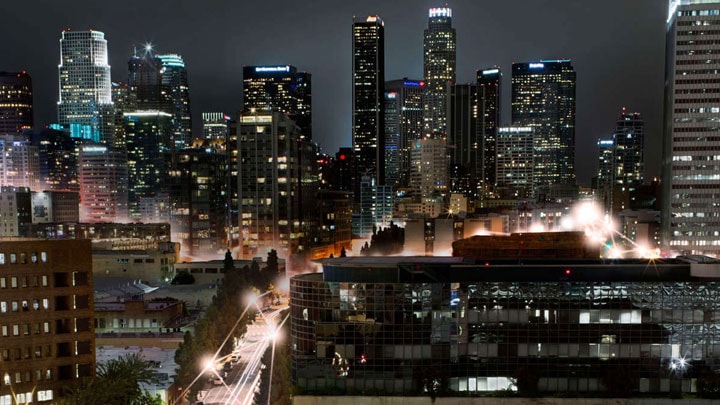It can be hard to remember now, but the tech revolution emerged in a wave of democratic optimism. The Web, for example, would give us citizens an empowering platform that we'd use to organize ourselves and make ourselves heard. We'd have more control over the worlds we lived in. Everything was going to be fine.
There's still reason for that optimism — if you look towards the smart city. It's here, on the level of the connected municipality, that technology is helping residents solve problems, and to participate in decision-making and management processes that used to exclude them. The results of this have been striking. The rise of IoT-enabled, app-driven tech isn't the only reason for what's been the urban renaissance now taking place, particularly in the United States. But it hasn't hurt either.
What follow are remarkable examples of how IoT-enabled smart city tech is making life better in cities around the world, and even redefining what it means to be a citizen.
In Atlanta, an app known as Cycle Atlanta beams bicyclists' route information from their smartphones into the databases of planners elaborating the city's network of bike paths. Planners can use this crowd-sourced data to discern use patterns and optimize the network — allocating more repair resources to a well-travelled route, for example, or fashioning what the data shows is clearly an irresistible shortcut into an official path.
This is data use in one of its best guises: divorced from any financial imperative, based on clear user buy-in, and firmly in the interests of the community it claims to serve.
But the app, which researchers at Georgia Tech developed, doesn't just transform its users into data-beacons. It also gives them the chance, via a simple interface, to report potholes, fallen branches, and other annoyances to the city in real time. In other words, it makes it easy for them to participate without mediation in the management of a small, but to them crucial, part of community life.
In other cities around the world, residents are using apps to tackle crucial issues pertaining to urban infrastructure.
In New Zealand, for instance, an app called Snap, Send, Solve lets people photograph potholes, graffiti, damaged signs, and the like and report them to their local governing councils. So far, so good — but what's especially novel about this app is how easy it makes things for the human beings using it. Its use of GPS data to pinpoint the location of the problem the user is reporting saves that user a step, eliminating ambiguity. The app will also automatically direct a report to the agency best geared to deal with it: crumbling asphalt goes to one bureau, a leaking hydrant to another.
The app is popular, too. In the first 12 months after its introduction in June, 2015, residents reported 9,284 incidents. Potholes and other road-related problems and graffiti have been particularly oft-reported.
The New Zealand app is far from the only one of its kind. Seattle's Find It, Fix It app is another solid entry in this app category, letting users photograph “issues" in the cityscape and send them, accompanied by location and other information, to the city authorities. Columbus, Ohio's MYCOLUMBUS app and Boston's BOS:311 app deserve mention as well.
In addition to BOS:311, Boston's impressive suite of citizen apps includes Street Bump. This ingenious tech exploits the motion detector on a driver's smartphone: When the driver hits a dump, the phone sends off to an AWS-powered server the pothole's precise location. Planners can then direct repair crews and allocate resources. The era in which road crews patrolled cities looking for potholes, burning fuel and man hours, is drawing to a close.
Sometimes, as in the cases above, the IoT-enabled tech that gets residents involved in management and decision-making originates with the authorities. But other times it originates elsewhere. That might be with citizens using tech to either accomplish goals the authorities for some reason can't, or to prod authorities towards action.
The latter was recently the case in Barcelona, where residents of the Plaza Del Sol neighborhood faced a problem: Their quarter had become a boisterous late-night haven for revelers, who generated prohibitive noise levels. Yet the local city council, lacking hard evidence of the nuisance, proved slow to act.
At their wits' end, residents mobilized. Working with Making Sense, a temporary European Commission-funded project that helped communities “fabricate their own sensing tools" towards making “sense of their environments and address[ing] pressing environmental problems in air, water, soil and sound pollution," the residents put to work a sensing platform called Smart Citizen, which collected noise and other data. What that platform told them was that nighttime street noise in Plaza Del Sol could at times approach 100 decibels — a reading associated with machine tools and ambulance sirens.
Plaza Del Sol provides a particularly clear example of how high technology can empower citizens, helping a community control its circumstances and environment. But all of the cases above speak to tech's ability to help people influence their conditions — when, of course, that tech is deployed ethically, and with the understanding that it can't serve merely as a way to distract citizens while the real decisions are made elsewhere.
High-profile tech “moonshots" with grandiose goals will continue to have their place. But it's on the real-world, day-to-day level at which most of us live, most of the time, that connective technology is making a big difference right now, and even fulfilling the tech revolution's original transformative promise.

Customer stories
Find out more about how our customers create value with Interact, across a wide range of professional lighting applications and around the world.